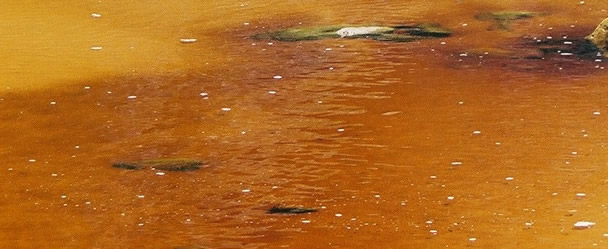Discharges to Land Risk Assessments
In 2001-2, Nick co-authored national Guidance on Requirements for ‘Prior Investigation’ and Monitoring (including ‘Requisite Surveillance of Groundwater’) for Activities Authorised under the Groundwater Regulations 1998 (See Reference #21 on Downloads page) for the Environment Agency - this guidance was updated and superseded by the Environment Agency’s H1 Guidance Annex J1 (See Reference #22 on Downloads page) and Annex J4 (See Reference #23 on Downloads page), but as of 01 February 2016, the Environment Agency has withdrawn this guidance.
The 2002 guidance set out an approach for assessing the risks to groundwater from discharges of waste sheep dip or waste pesticides to soil. Nick’s contribution included a review of approaches used elsewhere, setting out of the key attenuation processes to consider and datasets that could be used and developing a simplistic spreadsheet tool to allow (non-bypass) movement and attenuation of pesticides to be modelled in the soil.
Nick followed up the preparation of guidance with two R&D projects on requisite surveillance of groundwater. The first of these examined the feasibility of using the Environment Agency’s national groundwater quality monitoring network to check for the impact of authorised discharges on groundwater quality. The second, selected sites for assessment and installed and monitored boreholes and springs downgradient of specific sites. Based on the findings of both projects, recommendations were made and guidance prepared for the Environment Agency on how they could cost effectively meet the requirements of the Groundwater Regulations (1998) to monitor (where necessary) authorised activities which had a potential to pollute groundwater.
Nick applied the guidance he had prepared in a project for a pet food manufacturer who wished to continue irrigation of process plant washwater effluent to land. The work progressed well, but in the end the practice had to cease due to concerns driven by the then recent BSE crisis and the TSE (England) Regulations (2002). Nick supported the same client on the same site, prior to leaving Entec UK Ltd in September 2009. That most recent work assessed impacts on groundwater from construction of new warehouse facilities in the previous washwater effluent irrigated areas. Nick has subsequently supported this client whilst at RUKHYDRO Limited.
Since early 2016, Nick has been evaluating the impact of an existing discharge of treated bottled water / fruit juice effluent to ground via a soakaway. The work involved understanding the history of the discharge in terms of rate and quality and evaluating its impact on the groundwater environment. Piezometers have been installed and samples collected. The discharge rate had increased over the years and overwhelmed the treatment capacity of the aeration tank and wetland. This had led to a higher than planned organic loading to groundwater which in turn led to changes in groundwater quality downgradient of the discharge. The measured dilution and natural attenuation reactions were modelled and the resulting understanding used to support the feasibility of monitored natural attenuation remediation following cessation of the discharge. Groundwater Science provided support on impacted groundwater plume modelling.

